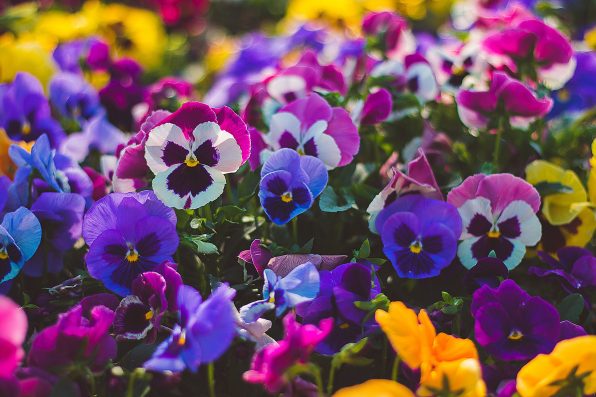Winter Pansies Are The Perfect Perky Flowers To Brighten Up Your Space Amidst The Chilly Weather: Here’s How To Grow And Care For Them

Just because the days are now dark and cold, that doesn’t mean your garden has to be the same way. Brighten up your space with winter pansies, also known as ice pansies. These pretty, perky plants are a reliable way to add interest to your garden during the winter season, a time when you need the most cheering up.
Winter pansies offer a lot of versatility. You can plant them in hanging baskets, pots, flower beds, borders, and windowsills. Winter pansies provide beautiful colors with shades that range from purple and blue to white and yellow.
They are simple enough to work with if you know what you’re doing. If you don’t, here’s everything you need to know about winter pansies, including how to grow them from seed, how often you need to water them, and everything in between.
How To Grow Winter Pansies From Seed
The process of growing winter pansies from seed isn’t hard to get the hang of, whether you’re doing it indoors or outdoors. It’s usually easier to start pansy seeds indoors and transplant them outside. It’s recommended to start them about eight weeks before frost hits in your area.
First, fill your containers with a special seed-starting mix. Next, sprinkle the seeds over the soil and bury them with a half-inch layer of the mix. Water the seeds and then cover them with plastic wrap. The seeds should be kept in a warm, protected location around 70 degrees Fahrenheit.
Once they begin to take root, move them to a place that gets bright, indirect sunlight and remove the plastic covering. After the seed grows a second set of leaves, transplant it into a two-inch pot or outside in your garden if the temperature is below 80 degrees Fahrenheit.
How To Care For Winter Pansies
These flowers prefer at least six hours of direct sunlight. They can still grow in partial shade, but their blooms will be smaller. Winter pansies also require rich, well-draining soil. The soil must be kept moist but not wet.

Valdeon – stock.adobe.com – illustrative purposes only
Potted pansies may need a little more water than ones that are in the ground. To tell when they need a good soak, stick your finger into the soil down to the knuckle to see if it’s dry. Every two weeks, apply a well-balanced fertilizer to your winter pansies.
Keep winter pansies in temperatures that range from 40 to 60 degrees. While they can withstand cooler weather, you’ll want to protect them from prolonged cold spells and deep freezes. When harsher conditions approach, shield your crop with a towel, sheet, or a layer of mulch. Be sure to continue watering the flowers until a hard freeze.
Common Problems
One issue you might come face to face with is leaf discoloration. If the leaves start to turn yellow, that’s usually a sign of overwatering. If any of the yellow leaves drop, remove them immediately so disease won’t develop.
Brown or black leaves also indicate improper watering. It may also be the result of a fungal disease. If this is the case, remove the affected foliage and apply fungicides to control the spread.
Winter pansies make a tasty snack for aphids and slugs, so watch out for those greedy pests. A clever trick to get rid of slugs is to fill a shallow dish with a bit of beer and place it at ground level. The slugs will be drawn to the liquid and leave your pansies alone. You can deter aphids by treating the foliage with neem oil or insecticidal soap.
Sign up for Chip Chick’s newsletter and get stories like this delivered to your inbox.
More About:Gardening